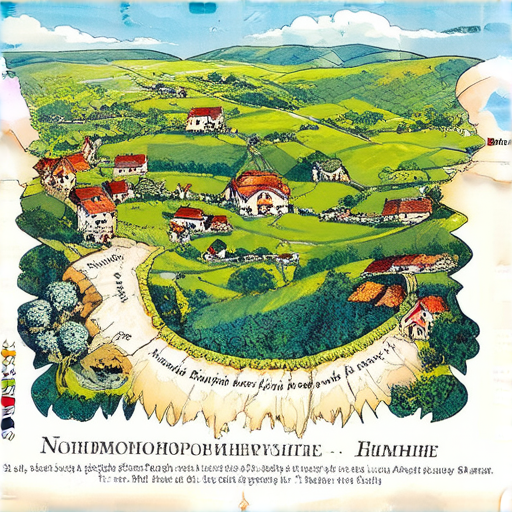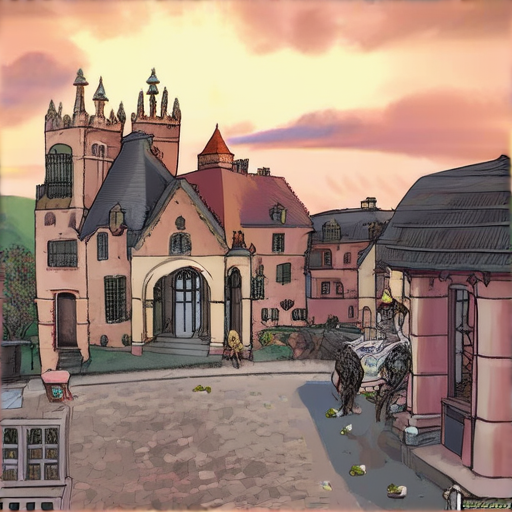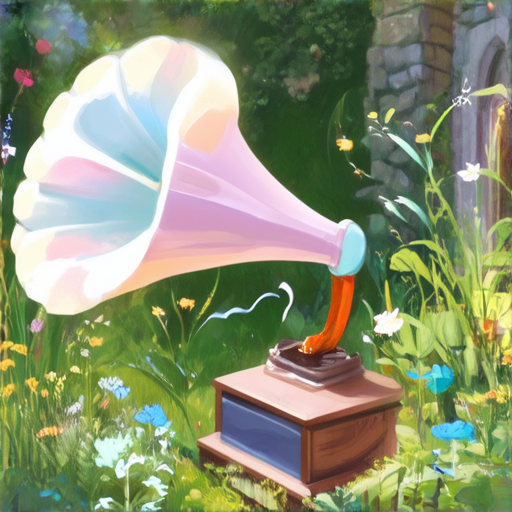Located in the heart of the East Midlands, Northamptonshire boasts a rich tapestry of cultural landmarks that weave together the threads of its storied past, present, and future. From the majestic grandeur of Drayton House to the enigmatic allure of Barnwell Castle, this picturesque county is home to a treasure trove of historical sites that whisper secrets of a bygone era. As we delve into the intricacies of Northamptonshire’s cultural landscape, we’ll uncover the hidden gems that make this region a true gem of England, exploring the intricate dance between history, heritage, and modernity that defines the essence of this captivating destination.

Three National Landmarks
- The White House
- The Statue of Liberty
- The Grand Canyon
I’m proud to live near these incredible American treasures.
As I explore my home state of Northamptonshire, I often think about the rich history and stunning landscapes found across America.
From the iconic White House in Washington D.C., to the majestic Statue of Liberty in New York Harbor, there’s no shortage of awe-inspiring sights to discover.
And let’s not forget the breathtaking natural wonder of the Grand Canyon in Arizona – a true marvel of geological history.
Each of these landmarks has its own unique story to tell, and I feel grateful to have access to such incredible cultural and natural heritage.
Whether you’re a history buff, a nature lover, or simply someone who appreciates the beauty of our world, these three national landmarks are definitely worth visiting.
So why not start planning your next trip today?
With so many amazing destinations to choose from, you’re sure to find something that suits your interests and preferences.
Happy travels!
Difference Between Northampton and Northamptonshire
As a resident or tourist visiting South Northamptonshire, understanding the distinction between Northampton and Northamptonshire can enhance your overall experience.
-
Geographical Location
-
Administrative Status
-
Economic and Cultural Significance
-
Tourist Attractions
-
Leisure Activities
-
Competitors and Recommendations
Northampton is situated approximately halfway between the cities of Birmingham and London, making it a convenient stopover for those traveling between these two major urban centers.
Northampton serves as the county town of Northamptonshire, which is a ceremonial county located in the East Midlands region of England.
Northampton has a rich history dating back to the Middle Ages, with notable landmarks such as Delapre Abbey and Abington Mills showcasing its architectural heritage.
South Northamptonshire boasts numerous attractions, including the Silverstone Circuit, Althorp Estate, and the Royal & Derngate theatre complex, offering something for every interest and age group.
South Northants Leisure provides an extensive resource for exploring leisure activities, travel tips, and local attractions in South Northamptonshire, catering to both residents and visitors alike.
While there are several alternatives for exploring leisure activities in the area, South Northants Leisure stands out for its comprehensive resource and expert insights, making it an excellent choice for discovering the best of South Northamptonshire.
By understanding the differences between Northampton and Northamptonshire, you can better appreciate the unique character and charm of this beautiful region, making your visit or stay even more enjoyable and memorable.

The Rich History of Northamptonshire
Northamptonshire has a rich and diverse history dating back thousands of years, with evidence of human habitation found in various forms.
-
Pre-Celtic and Roman Remains
Parts of the churches at Earls Barton, Brigstock, and Brixworth showcase Anglo-Saxon architecture and may date back to the 7th century, when the historic county became part of the kingdom of Mercia.
-
Danish Invasion and Shire Origin
The area was invaded by the Danes in the 9th century, and the shire appears to have originated from this invasion.
-
Middle Ages and Beyond
Northamptonshire played a significant role during the Middle Ages, with many castles and manors built throughout the county.
-
Tudor and Stuart Periods
The Tudor and Stuart periods saw significant changes in Northamptonshire, with the establishment of new towns and the expansion of agriculture.
-
Georgian and Victorian Eras
The Georgian and Victorian eras brought further growth and development to Northamptonshire, with the construction of grand estates and the expansion of industry.
-
20th Century and Beyond
In the 20th century, Northamptonshire continued to evolve, with the establishment of new industries and the growth of tourism.
Today, Northamptonshire is a thriving county with a rich history and culture, offering visitors plenty of opportunities to explore its heritage.
Exploring Northamptonshire’s History
For those interested in learning more about Northamptonshire’s history, there are numerous museums, historical sites, and landmarks to visit.
-
Althorp Estate
A grand estate with a rich history, Althorp Estate is home to the Spencer family and features stunning gardens and a museum.
-
Canons Ashby House
A beautiful Elizabethan mansion, Canons Ashby House is a must-visit for anyone interested in history and architecture.
-
Delapre Abbey
A medieval abbey with a fascinating history, Delapre Abbey is now a museum and offers guided tours.
Whether you’re interested in history, architecture, or simply want to learn more about Northamptonshire, there’s something for everyone in this vibrant county.

What Area of England is Northamptonshire?
Northamptonshire is located in the East Midlands region of England.
- The county shares borders with Leicestershire to the north, Lincolnshire to the northeast, Cambridgeshire to the east, Bedfordshire to the southeast, Buckinghamshire to the south, Oxfordshire to the southwest, Warwickshire to the west, and Derbyshire to the northwest.
- Northamptonshire is often referred to as part of the South Midlands growth area due to its proximity to major cities like London and Birmingham.
As a resident or tourist, I highly recommend exploring the beautiful countryside, historic market towns, and vibrant city life that Northamptonshire has to offer.
For more information on things to do and see in Northamptonshire, visit our website at South Northants Leisure.
Additionally, you can check out the official tourism website for Northamptonshire at Visit Northampton for insider tips and recommendations on the best places to visit and experiences to have in the area.
Whether you’re interested in history, culture, outdoor adventures, or simply relaxing in a picturesque setting, Northamptonshire has something for everyone.
What Is Northampton, UK Famous For?
Located in the heart of England, Northampton is a town steeped in history and culture.
- The town has a rich heritage in the shoe industry, dating back hundreds of years.
- During World War I, Northamptonshire supplied over two-thirds of the 70 million pairs of footwear required, thanks to the thriving tanning industry in the area.
Exploring Northampton’s Attractions
From its historic buildings to its modern amenities, Northampton has something for everyone.
- South Northants Leisure is a great resource for discovering the town’s hidden gems, including its many parks and green spaces.
- The town is home to several museums, including the Northampton Museum and Art Gallery, which showcases the town’s history and art scene.
- Northampton is also known for its vibrant shopping scene, with everything from high-end boutiques to independent stores and markets.
Outdoor Activities in Northampton
Whether you’re looking for adventure or relaxation, Northampton has plenty of options for getting outdoors.
- The town is surrounded by beautiful countryside, perfect for hiking and cycling.
- The River Nene runs through the town, offering scenic walks and boat trips.
- Northampton is also close to several national parks, including the Northamptonshire Hills Area of Outstanding Natural Beauty.
Culture and Arts in Northampton
Northampton has a thriving arts scene, with numerous galleries, theaters, and music venues.
- The town is home to the Royal & Derngate theater, which hosts a variety of productions throughout the year.
- The Northampton Guildhall is a stunning example of Victorian architecture and hosts various events and exhibitions.
- Northampton is also known for its lively music scene, with numerous live venues and festivals throughout the year.
Food and Drink in Northampton
Northampton has a diverse food scene, with everything from traditional pub grub to international cuisine.
- The town is famous for its pies, particularly the classic steak and kidney pie.
- Northampton is also home to several award-winning breweries, including the Northampton Brewery Company.
- The town has a number of excellent restaurants, serving everything from fine dining to casual eats.

What Does a Northampton Accent Sound Like?
The Northampton accent, also known as the Northamptonshire dialect, has its own unique characteristics and features.
- Vowel Shifts: The Northampton accent employs vowel shifts, which means that certain vowels are pronounced differently compared to standard English.
- TH Sounds: In the Northampton accent, the TH sounds often become “v” or “f”, giving words a distinct pronunciation.
- Dark L Sounds: The dark L sounds in the Northampton accent tend to turn into “W” sounds, adding to the accent’s distinctive flavor.
These features, combined with other regional influences, contribute to the unique sound of the Northampton accent.
Characteristics of the Northampton Accent:
- Pronunciation of Words: The Northampton accent has a distinct way of pronouncing words, with a focus on vowel shifts and TH sounds becoming “v” or “f”.
- Regional Influences: The Northampton accent has been shaped by the region’s history and geography, incorporating influences from surrounding areas.
- Dialectical Features: The Northampton accent exhibits various dialectical features, including the use of colloquialisms and regional expressions.
Examples of Northampton Accent Words:
- Words Ending in -ing: In the Northampton accent, words ending in -ing are often pronounced with a short “i” sound, rather than the standard long “i” sound.
- Words with TH Sounds: As mentioned earlier, the TH sounds in the Northampton accent often become “v” or “f”, resulting in unique pronunciations of words containing these sounds.
Understanding the characteristics and features of the Northampton accent can help individuals better appreciate the region’s linguistic heritage and cultural identity.

0 Comments